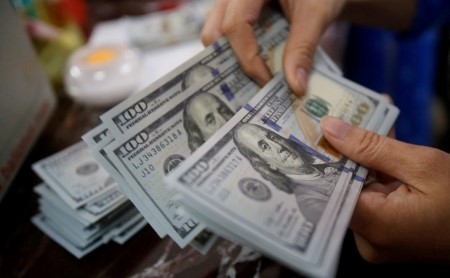




Philippines Trade Update: Trade trajectories trend along
 DOWNLOAD
DOWNLOAD

Policy Rate Updates: Double cut finale
 DOWNLOAD
DOWNLOAD

Monthly Economic Update: One for the road
 DOWNLOAD
DOWNLOAD


US yields drift lower before Fed policy meeting, economic data

NEW YORK – US Treasury yields fell on Monday, pulling back a little from highs hit last week ahead of a Federal Reserve meeting that is expected to strike a hawkish tone, while keeping interest rates unchanged.
A slew of important US economic data, including the nonfarm payrolls report on Friday, also awaits bond investors this week.
In afternoon trading, the benchmark 10-year yield was down 4.1 basis points at 4.628%. The yield on the 30-year Treasury bond dipped 3.2 bps to 4.750%.
On the short end of the curve, the US two-year Treasury yield, which typically reflects interest rate expectations, slipped 1.9 bps to 4.980%.
“The trend for higher Treasury yields is still there, but the higher CPI (consumer price index), PCE (personal consumption expenditures price index) are primarily fully reflected in the yield curve,” said Clayton Triick, head of portfolio management, public strategies, at Angel Oak Capital Advisors in Atlanta.
“Investors who have cashed in are looking to buy into the new month — 5% on twos and very high 4s (4%). And the belly of the curve is a good time to buy.”
A key event this week is the two-day Federal Open Market Committee meeting.
The Fed on Wednesday is widely expected to hold interest rates unchanged at the 5.25% to 5.50% range. Fed Chair Jerome Powell is likely to sound cautious on the economic outlook, outlining the risks with still elevated inflation and a tight labor market, analysts said.
The market will likely have confirmation of that labor tightness with the US jobs report due on Friday. Wall Street economists are forecasting new jobs created at 240,000 in April, a still lofty number, but down from the 303,000 posted in March, according to a Reuters poll.
“We expect Chair Powell to sound more cautious than usual. … Inflation has continued to surprise expectations to the upside in Q1 while the labor market has yet to show signs of meaningful deceleration,” TD Securities wrote in a note.
Also on Monday, the US Treasury announced higher-than-expected borrowing estimates for the second quarter of USD 243 billion, up from USD 202 billion outlined in January.
Despite the increase in financing estimates for the quarter, Action Economics said in its blog that it does not expect the Treasury to raise coupon issuance at the upcoming May refunding announcement on Wednesday.
Treasury said in the January refunding that it did not expect further increases for at least the next several quarters, given the current projected borrowing needs.
Traders also said that Treasury yields came off their lows earlier in the session on the back of numerous corporate bond issuances, led by Boeing, as issuers rush to get in their funding before month-end.
Boeing announced on Monday a six-part senior unsecured note offering, priced at USD 10 billion, according to IFR.
Wall Street dealers typically looked to lock in borrowing costs for corporate bonds they are underwriting. As part of that process, a dealer sells Treasuries as a hedge to lock in the borrowing cost on the bond issue before the deal is completed. Once the bond is sold, the dealer buys Treasuries to exit the “rate lock.”
Also on Monday, the yield curve flattened, or deepened its inversion. The spread between US two- and 10-year notes was minus 35.1 bps, from minus 33.7 bps late on Friday.
This curve, effectively a “bull flattener,” refers to a scenario in which long-term interest rates are falling faster than short-term rates.
The curve has been on a steepening trend, reflecting expectations that the Fed’s next policy move will be a rate cut, although it could hold rates steady in between.
(Reporting by Gertrude Chavez-Dreyfuss; Editing by Christina Fincher and Jonathan Oatis)
This article originally appeared on reuters.com





 By Reuters
By Reuters